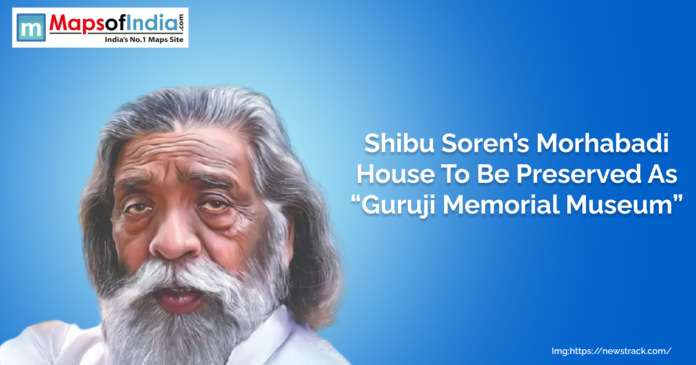The Jharkhand government has also made a historic move to pay tribute to Shibu Soren, who was popularly known as Dishom Guru, by transforming his office house in Morhabadi, Ranchi, into a museum. This resolution was passed during a recent cabinet meeting and can be considered as an act to remember the man who played a central role in the process of the creation of the state of Jharkhand and worked all his life to protect the rights of the tribal people. The house in which so many important events in the Jharkhand movement have taken place will become a place where the generations to come will be able to know about the life, struggle and efforts of Soren.
This house is not merely a place of residence; it has always been a focal point of political debates, plans and movements related to the struggle for a separate state of Jharkhand. It has been the convergence point of the leaders and activists who fought alongside Shibu Soren in the statehood movement over the decades. Today, having turned into a museum, every part of the house is supposed to bear his struggle and eternal devotion to tribal upliftment and social justice.
Together with the museum, the government is also making plans to put up a grand memorial park and a towering statue of Shibu Soren in Chirudih, Jamtara district, his birthplace and karmabhoomi. The goal is to have an environment that will not only keep his legacy alive but also motivate the generations to come. The government has stressed that the role of the Dishom Guru cannot be forgotten because his impact in protecting the identity of Jharkhand and in championing the cause of the oppressed people has left an unforgettable mark on the history of the state.
Besides the museum and the park, the state has also suggested that a bigger memorial be constructed in Ranchi, along Bhusur Mauza of the bypass road, covering a few acres of land. The memorial will also entrench him in the national memory of the people of Jharkhand. Furthermore, from 2026, the life and hardships of Shibu Soren will also be part of the school curriculum, as students throughout the state will be exposed to his life, determination, and sacrifices since childhood.
This set of programs can be seen as the government’s investment in paying respect to Dishom Guru, who is considered among the guiding forces and a father of the tribal community. The government is trying to ensure that the ideals and struggles of the man continue to live in the hearts of the people in future generations by turning his home into a museum and erecting memorials in his name.










